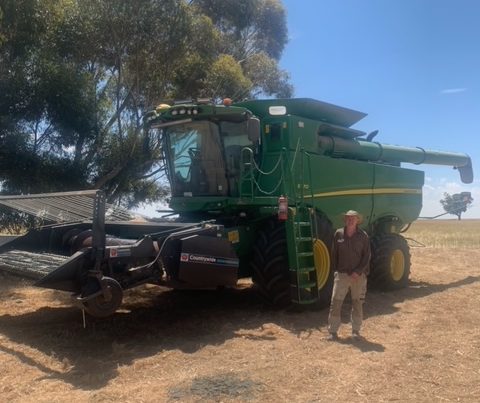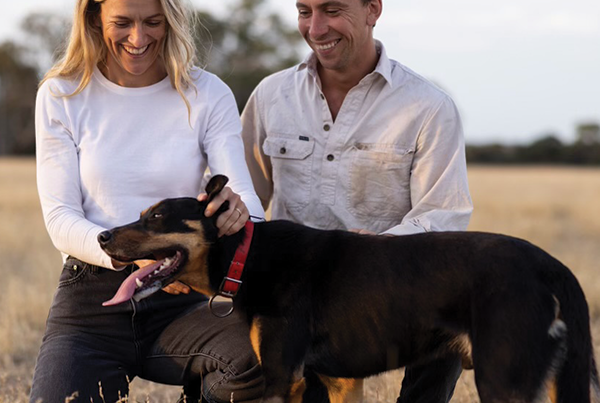
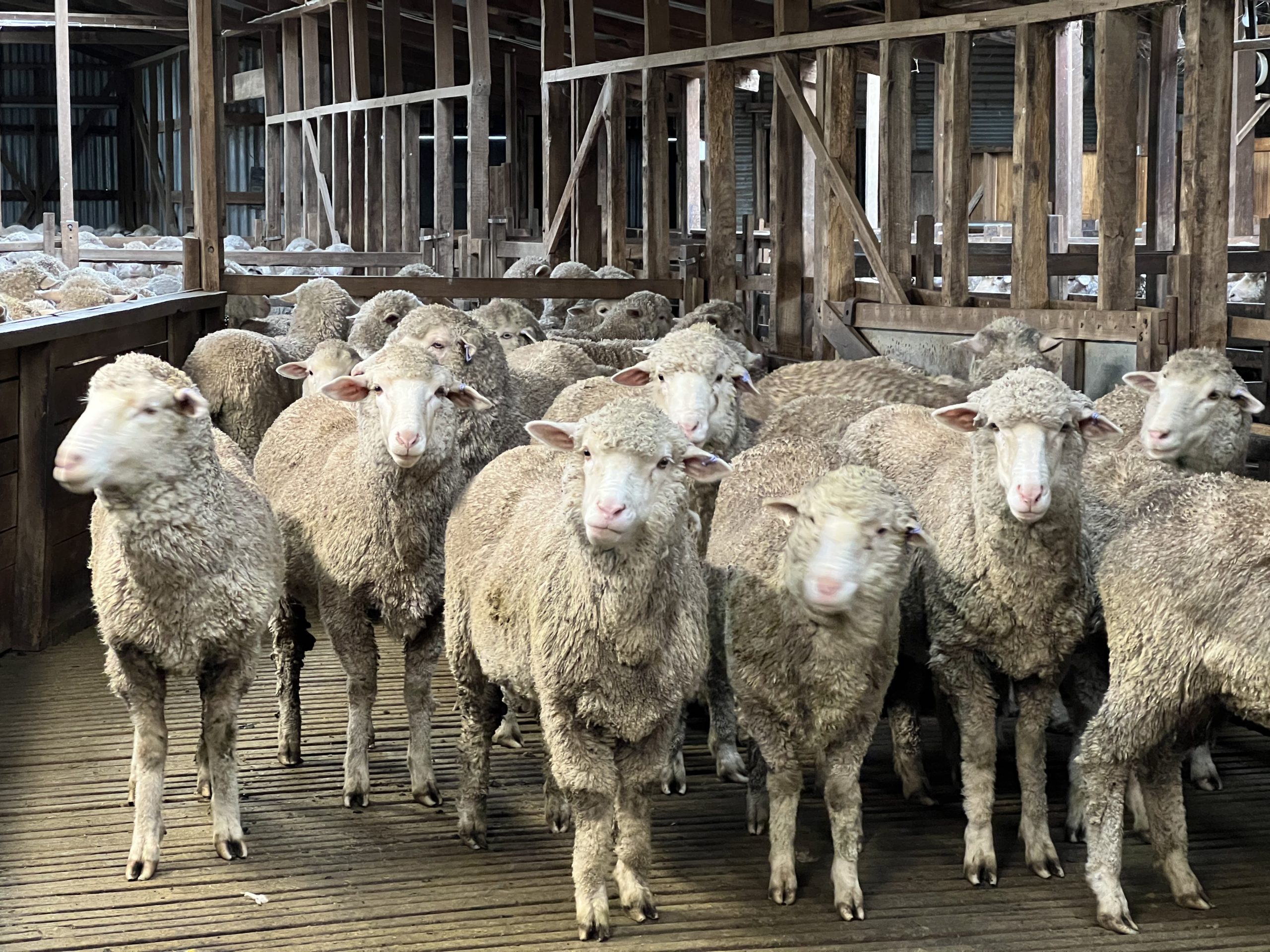

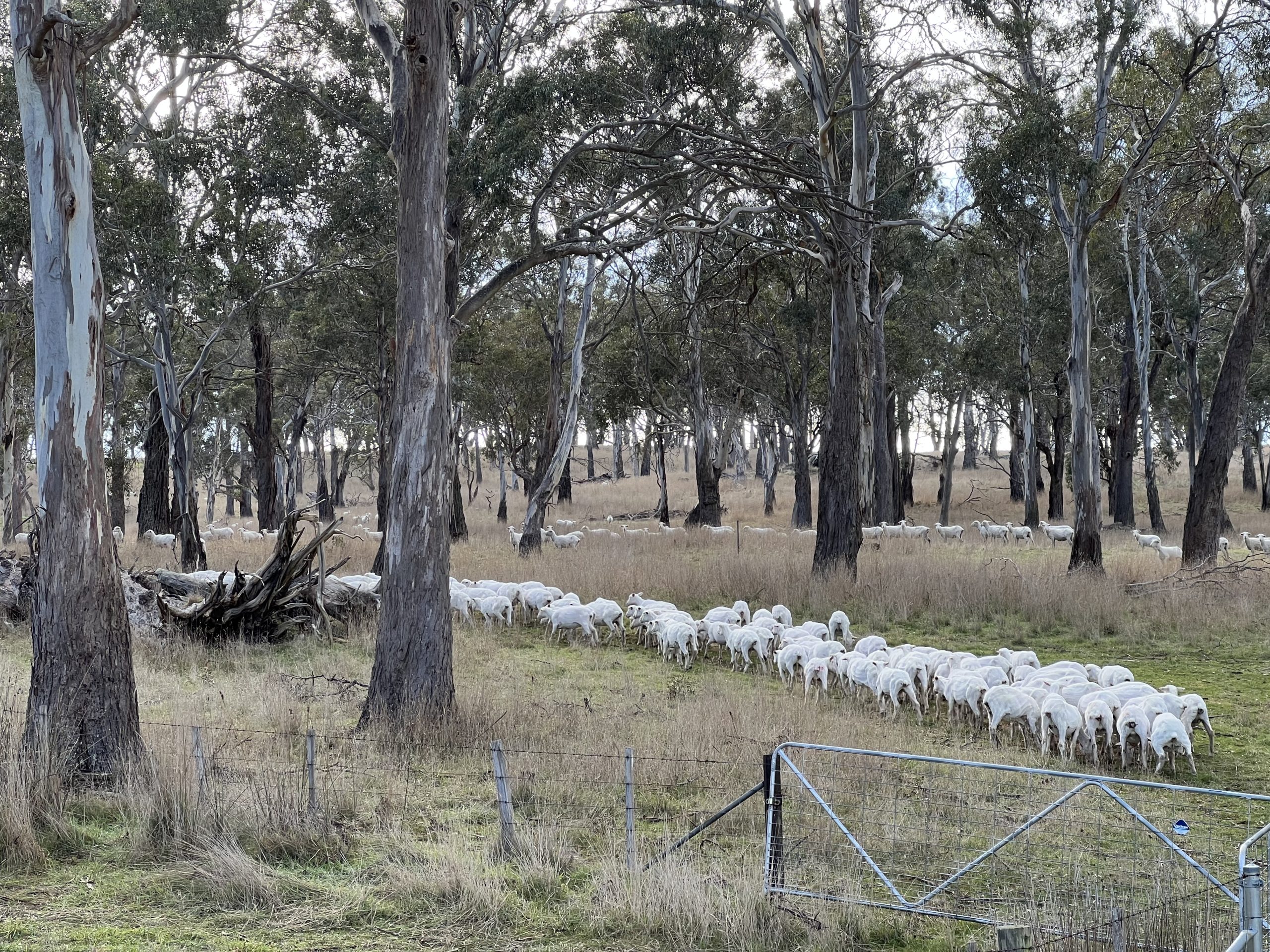
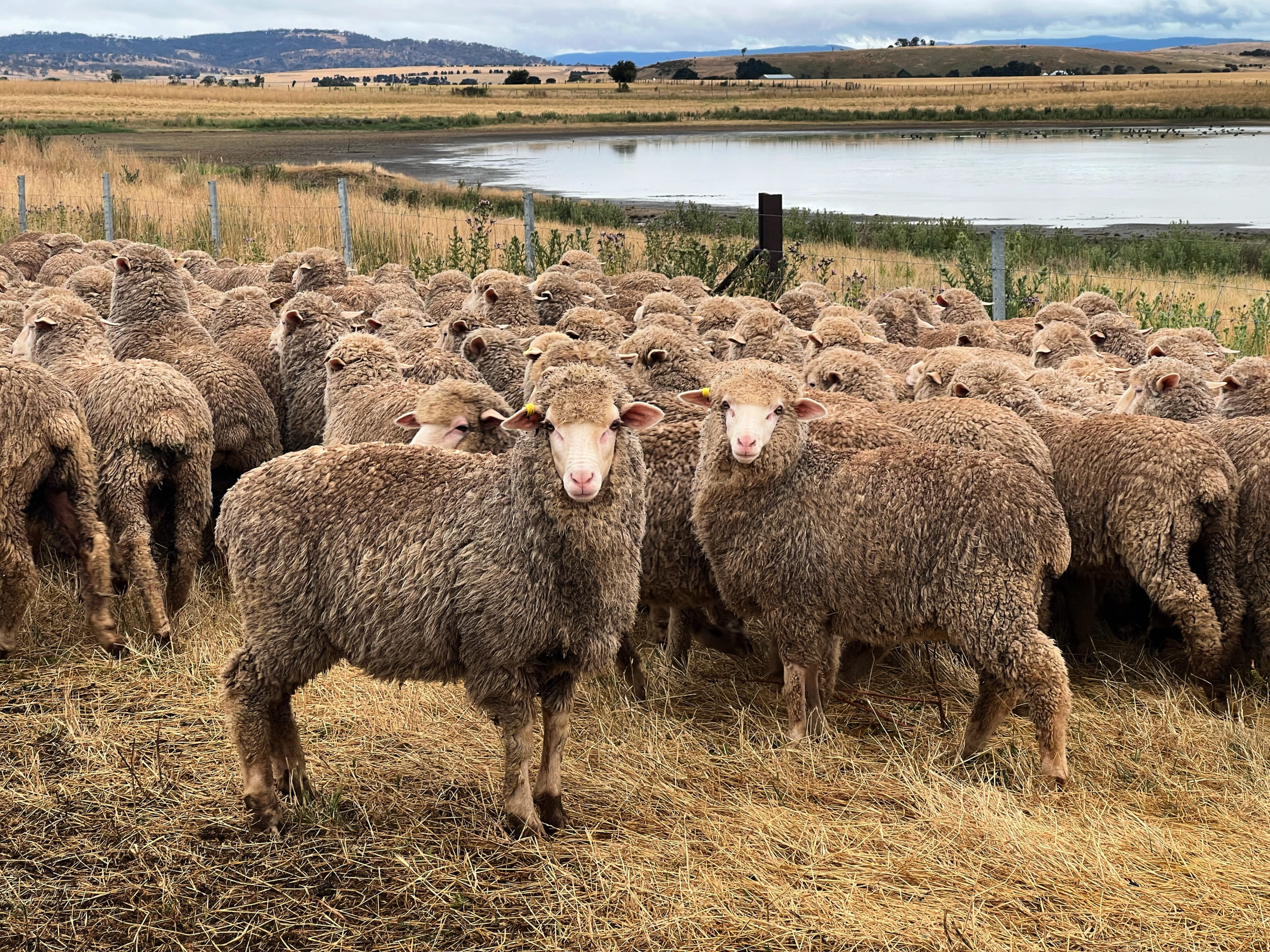
At a glance
Who: Colette Glazik
What: Merino wool and lamb producers
Where: “Lewisham” in Northern Midlands of Tasmania, a prime wool growing area in Australia
Can you tell us about your property/enterprise?
I have had the great pleasure of working and learning from my mum and step dad, Rae and Lindsay Young, and partner Joey McKibben.
My parents have “Lewisham” in Ross a 1100 ha of undulating land, where we and our self-replacing poll merino flock have some spectacular views, regal old growth eucalypts and a wonderful array of animals starting at the insect level and moving upwards into more noticeable things like echidnas, Tasmanian Devils, an array of birds including Wedge tailed Eagles and Masked owls. In 2018 when Joey and I decided to enter farming, we brought a 100ha property in Tunbridge (south of Lewisham) in partnership with them.
Recently Lewisham has also purchased 900ha of land for conservation purposes near Lake Leake to protect it from logging.
The farm is Responsible Wool Standard accredited, with 8-month shearing, a micron range of 17.2-20.1 and annual production of 30,000 kg greasy wool/year. We have approximately 8000 sheep and get a lambing percentage of 130%.
What are some of the opportunities you see for your business/property in coming years?
To work out a management system that fits in with the growing demand of discerning clients, and aligns us with the expectations required of us into the future to be climate neutral.
We see the ability, using technology, to maximise production on less of our land while either protecting more or converting it to providing ecosystem services for the catchment. These technologies include all things from sheep genomics to new and different pastures mixes.
And what are your main challenges now, and into the future?
Climate change is our greatest challenge. The climatic uncertainties produce difficulties in terms of stocking rates, available food stocks and of course income. Mitigation strategies include investment in irrigation, both in water and infrastructure. These investments are major and for many months of the year, depending on the season can lie idle.
Ecosystem collapse is another challenge, with less and less nature in our catchment and more and more chemical dependency everywhere. Added with the additional challenge of not being financially rewarded for looking after the landscape, there are difficulties in trying to farm and be profitable while keeping nature on and around the farm.
Finding labour to carry our everyday tasks and seasonal activities such as shearing or lamb marking are difficult realities for all of us. This drives the cost of labour up but does not drive the price of our commodity up, again increase price pressures. Commodity price fluctuations continue to challenge farmers, while this is not a new problem, it is a business challenge.
How has climate change impacted your farm business?
We have had to make a major financial investment in irrigation which we cannot do without, given the new variability in rainfall. This adds costs to the product we produce without necessarily adding value to the product.
What are some of the on-farm adaptations or changes you’ve been employing in recent years and what’s driving them? How successful have they been, and what benefits have you seen as a result?
In our irrigation system we have tried perennial species only as opposed to cropping. It is complex to evaluate the results, but for us it requires less inputs while providing a constant source of feed. As with many ideas, one can be swapping one problem for another.
We have used a rotational grazing system for a long time and in the last five year we have changed lambing, and improved our genetics. We now join for a shorter period, scan everything and lamb in smaller mobs. Our lambing percentage has increased from 120% to 130% and we turn off merino wethers from 7 months of age, whereas before, wether lambs would have been ready for slaughter by 10-12 months.
What are your hopes for Ag in Australia, into the future?
That it has a positive and fair contribution to mitigating climate change, and is recognised financially for that.
